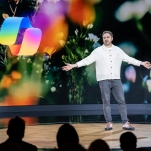This 17-year-old is helping low-income students learn to code
Through hackathons, 17-year-old Sharon Lin has collaborated on many inventive, socially conscious projects. She worked on Pearl Runner, a game designed to teach players about sexual health and Lotus VR, which encourages empathy for sexual assault victims and educates players about consent.
Many people in the hard sciences will tell you the field came naturally to them at a young age. But for Lin, a New York high school senior and recipient of the White House’s prestigious Champions of Change distinction, an inclination towards computer programming at 10 was met with an even stronger desire to spark change. Lin aims to challenge conversations about coding, computer programming, and bring marginalized girls into computer science.
“I think the general perspective of computer scientists is that they’re sort of isolated individuals who are somewhat antisocial…and usually work on problems by themselves,” Lin tells Fusion. “And, I certainly understand that that stereotype [has] been perpetrated by the media for so many years but I think it’s one of the stereotypes thats also drives computer science to become such a widely misunderstood field.”
-

-

-

-

-

-

-

-

-

-

-

-

-

-

-

-

-

-

-

-

-

-

-

-

-

-

-

-

-

-

-

-

-

-

-

-

-

-

-

-

-

-

-

-

-

-

-

-

-

-

-

-

-

-

-

-

-

-

-

-

-

-

-

-

-

-

-

-

-

-

-

-

-

-

-

-

-

-

-

-

-

-

-

-

-

-

-

-

-

-

-

-

-

-

-

-

-

-

-

-

-

-

-

-

-

-

-

-












































































































